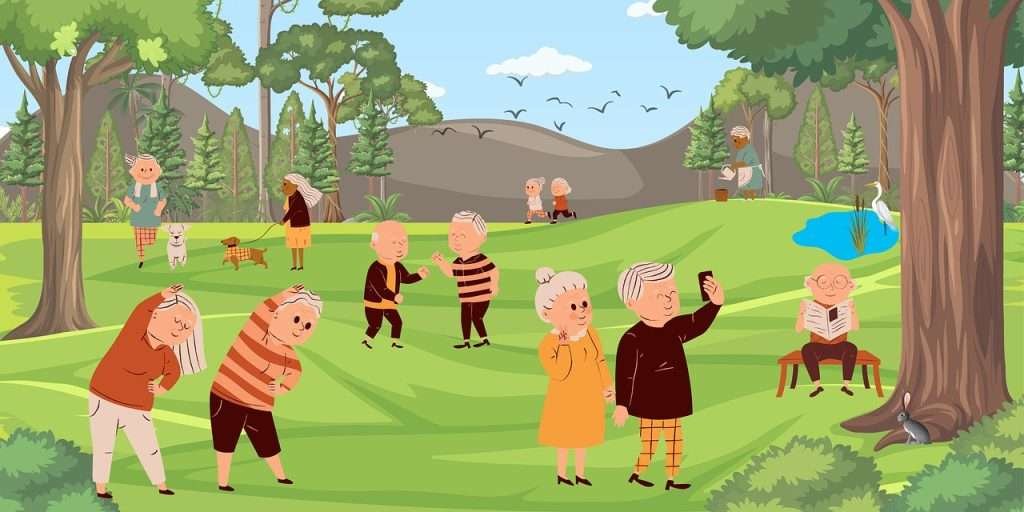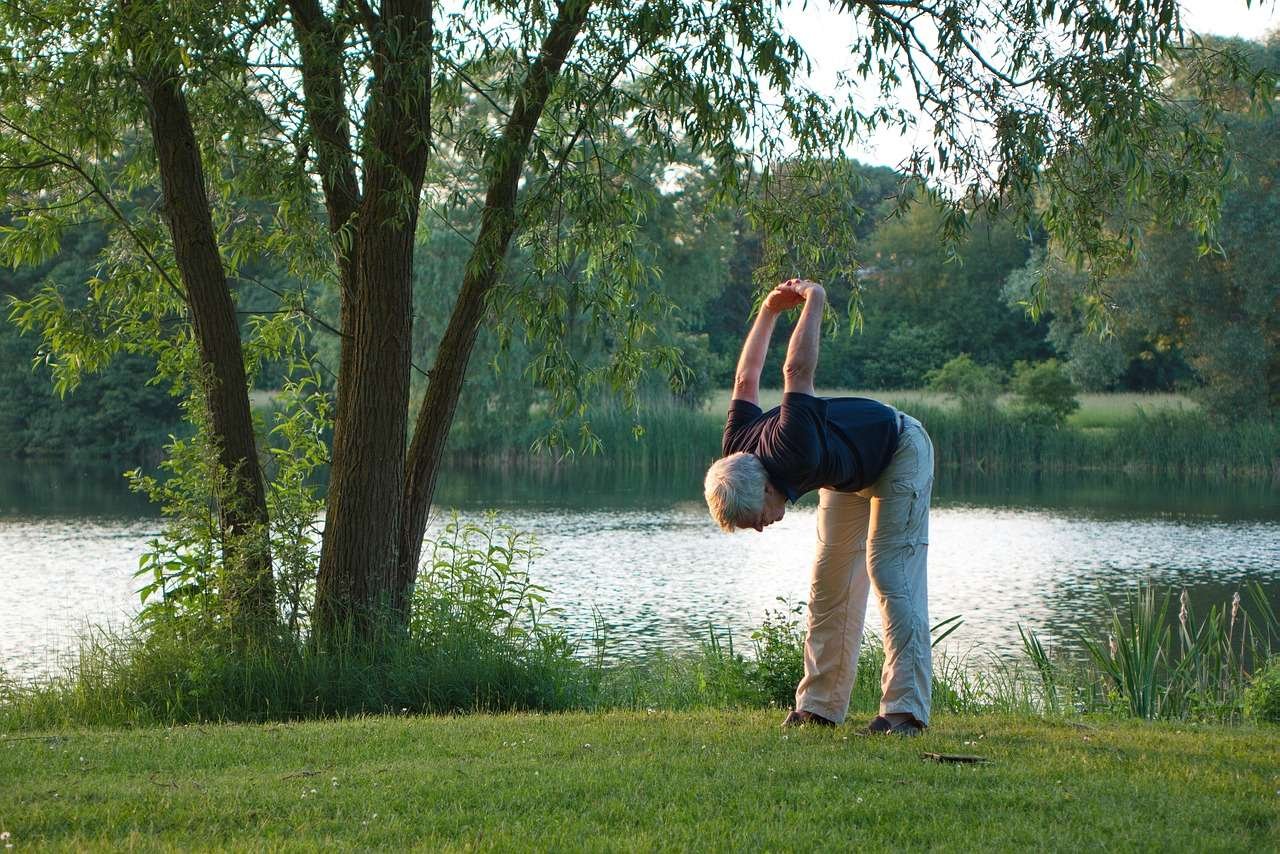If you’re a senior looking for a safe and gentle way to stay active and improve your overall well-being, look no further than chair exercises. Whether you want to maintain your flexibility, increase your strength, or simply get moving, these exercises can be done right from the comfort of your own chair. With a variety of seated movements designed to target different muscle groups, chair exercises provide a convenient and effective way for seniors to stay active and healthy. So, grab a chair and get ready to feel the benefits of incorporating chair exercises into your daily routine.
Benefits of Chair Exercises for Seniors
Chair exercises can provide numerous benefits for seniors, improving their overall health and well-being. Here are some key benefits:
Improving cardiovascular health
Engaging in regular chair exercises can help seniors improve their cardiovascular health. Activities such as seated marching and leg extensions can get the heart rate up, increasing blood flow and strengthening the heart. This can lead to improved stamina and overall cardiovascular fitness.
Increasing muscular strength and flexibility
As we age, it’s important to maintain muscle strength and flexibility. Chair exercises offer a safe and effective way for seniors to work on their strength and flexibility. Movements like chair squats and arm curls target major muscle groups, such as the legs and arms, helping to build strength and maintain muscle tone. Leg extensions and seated side bends can also improve flexibility and range of motion.
Enhancing balance and stability
Maintaining good balance and stability is crucial for seniors to prevent falls and injuries. Chair exercises can help improve balance by targeting the core muscles and improving proprioception. Exercises like leg raises and seated twists challenge the body’s balance and coordination, enhancing stability and reducing the risk of falls.
Reducing joint pain and stiffness
Seniors often experience joint pain and stiffness, which can limit their mobility and daily activities. Chair exercises provide a low-impact workout option that helps to alleviate joint pain and improve joint mobility. Gentle movements like shoulder rolls and ankle circles can help loosen up the joints and reduce stiffness, promoting better joint health and function.
Boosting mood and mental well-being
Regular physical activity has been shown to have a positive impact on mental health and overall well-being. Chair exercises not only provide physical benefits but also help to boost mood and reduce stress. Engaging in exercise releases endorphins, which are natural mood elevators. Additionally, chair exercises can offer a sense of accomplishment and empowerment, leading to improved self-esteem and mental well-being in seniors.
Safety Tips for Chair Exercises
While chair exercises offer numerous benefits, it’s important to prioritize safety to prevent injuries. Here are some safety tips to keep in mind:
Consulting with a healthcare professional
Before starting any new exercise program, it’s always a good idea to consult with a healthcare professional, especially if you have any pre-existing medical conditions or concerns. They can provide personalized advice and guidance on the types of exercises that are safe for you to perform.
Warming up and cooling down
Just like any workout, it’s important to warm up your body before engaging in chair exercises. Perform gentle stretches and range of motion exercises to prepare your muscles and joints for the movements ahead. Similarly, remember to cool down with some light stretches to help your body recover and prevent post-exercise soreness.
Using proper form and technique
Proper form and technique are vital when performing chair exercises. This ensures that you are targeting the intended muscles and reducing the risk of injury. Pay attention to your posture, keep your core engaged, and follow the instructions for each exercise carefully. If you’re unsure about the correct form, consider working with a qualified fitness professional or watching instructional videos.
Listening to your body’s signals
It’s important to listen to your body and pay attention to any pain or discomfort during chair exercises. If something doesn’t feel right or causes pain, modify or stop the exercise. Pushing through pain can lead to injuries. Remember, chair exercises should feel challenging but not painful. Be gentle with yourself and progress at a pace that feels comfortable for you.
Avoiding exercises that cause pain or discomfort
Each person’s body is unique, and what works for one individual may not work for another. If a particular exercise causes pain or discomfort, avoid it and find alternatives that target the same muscle groups. It’s essential to find exercises that are suitable for your body and fitness level.

Types of Chair Exercises
Chair exercises can be diverse and can target different muscle groups. Here are some common chair exercises for seniors:
Seated Marching
Seated marching is a simple yet effective exercise that gets your heart rate up and engages the leg muscles. Sit tall in your chair, lift one knee, and then the other, as if marching in place. You can increase the intensity by adding arm movements or using ankle weights.
Chair Squats
Chair squats help strengthen the lower body, including the quadriceps, hamstrings, and glutes. Stand in front of the chair, feet hip-width apart. Lower yourself towards the chair as if you’re about to sit down, and then push through your heels to stand back up.
Leg Extensions
Leg extensions are great for targeting the quadriceps and improving lower body strength. Sit on the edge of the chair, straighten one leg, and lift it up until it is parallel to the floor. Hold briefly and then lower the leg back down.
Arm Curls
Arm curls target the biceps and can be performed with or without weights. Sit tall with a weight in each hand, palms facing forward. Bend your elbows and curl the weights towards your shoulders, then lower them back down.
Leg Raises
Leg raises help strengthen the hip flexors and abdominal muscles. Sit tall in your chair, extend one leg straight out in front of you, hold briefly, and then lower it back down. Repeat on the other side.
Shoulder Rolls
Shoulder rolls help improve mobility and reduce tension in the shoulders. Sit tall with your arms relaxed by your sides. Roll your shoulders forward in a circular motion, then reverse the direction.
Seated Twists
Seated twists engage the core, shoulders, and back muscles. Sit tall with your feet planted firmly on the ground. Rotate your torso to the right, using your core muscles, and then rotate to the left.
Chest Stretch
The chest stretch helps open up the chest and improve posture. Sit tall and clasp your hands behind your back. Gently squeeze your shoulder blades together as you lift your arms behind you. Hold the stretch for 30 seconds.
Seated Side Bends
Seated side bends target the obliques and can help improve flexibility in the spine. Sit tall with a hand on the side of your chair. Lean towards the opposite side, feeling a stretch along the side of your body. Repeat on the other side.
Ankle Circles
Ankle circles help improve ankle mobility and reduce stiffness. Sit tall with your feet flat on the ground. Lift one foot off the floor and rotate your ankle in a circular motion. Repeat on the other foot.
Chair Exercise Routine for Seniors
Here’s a sample chair exercise routine for seniors that incorporates the exercises mentioned above:
Warm-up: Neck and Shoulder Rolls
Start by gently rolling your neck and shoulders, forward and backward, to warm up the upper body.
Exercise 1: Seated Marching (1 minute)
Engage in seated marching, lifting your knees alternately, and increasing the intensity as desired.
Exercise 2: Chair Squats (2 sets of 10 repetitions)
Perform two sets of chair squats, focusing on keeping good form and engaging the leg muscles.
Exercise 3: Leg Extensions (2 sets of 10 repetitions per leg)
Complete two sets of leg extensions, alternating between legs and focusing on strengthening the quadriceps.
Exercise 4: Arm Curls (2 sets of 10 repetitions)
Perform two sets of arm curls, with or without weights, targeting the biceps and strengthening the arms.
Exercise 5: Leg Raises (2 sets of 10 repetitions per leg)
Engage in two sets of leg raises, working on strengthening the hip flexors and abdominal muscles.
Exercise 6: Shoulder Rolls (2 sets of 10 repetitions)
Complete two sets of shoulder rolls, focusing on improving mobility and reducing tension in the shoulders.
Exercise 7: Seated Twists (2 sets of 10 repetitions)
Perform two sets of seated twists, engaging the core and improving flexibility in the torso.
Exercise 8: Chest Stretch (hold for 30 seconds)
Hold a chest stretch for 30 seconds, focusing on opening up the chest and improving posture.
Exercise 9: Seated Side Bends (2 sets of 10 repetitions per side)
Engage in two sets of seated side bends, targeting the obliques and promoting flexibility in the spine.
Cool-down: Ankle Circles
Finish the routine with ankle circles, focusing on improving ankle mobility and reducing stiffness.

Recommended Equipment for Chair Exercises
To get started with chair exercises at home, consider having the following equipment:
Sturdy and stable chair
Choose a chair that provides stability and support throughout the exercises.
Resistance bands or weights (optional)
For added resistance, consider incorporating resistance bands or light weights into your chair exercise routine. This can help increase the intensity and further strengthen your muscles.
Comfortable clothing and supportive shoes
Wear comfortable, breathable clothing that allows for ease of movement. Opt for supportive shoes that provide stability and cushioning.
Water bottle
Stay hydrated throughout your chair exercise routine by having a water bottle nearby.
Exercise mat or towel for added cushioning
If desired, use an exercise mat or towel to add extra cushioning and comfort during floor-based exercises.
Additional Resources
If you’re looking for more guidance and resources on chair exercises for seniors, consider the following:
Online video tutorials for chair exercises
Many reputable fitness websites and YouTube channels offer free video tutorials specifically designed for chair exercises. These resources can provide visual demonstrations and step-by-step instructions to help you follow along safely and effectively.
Local senior centers or community centers offering chair exercise classes
Check with your local senior centers or community centers to see if they offer chair exercise classes. These group classes can provide a supportive and social environment as you engage in chair exercises with others.
Books or DVDs with chair exercise routines
There are several books and DVDs available that focus specifically on chair exercises for seniors. These resources can offer a range of exercises and routines to help you customize your own workout program.
In conclusion, chair exercises for seniors offer a multitude of benefits, including improvements in cardiovascular health, muscular strength and flexibility, balance and stability, joint pain and stiffness reduction, as well as mood and mental well-being enhancement. By following safety tips and incorporating various types of chair exercises into a routine, seniors can enjoy a safe and effective workout right from the comfort of their own homes. Remember to consult with a healthcare professional before starting any exercise program and listen to your body’s signals to ensure a pleasant and enjoyable exercise experience. Stay active, stay healthy, and keep moving with chair exercises!




